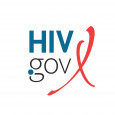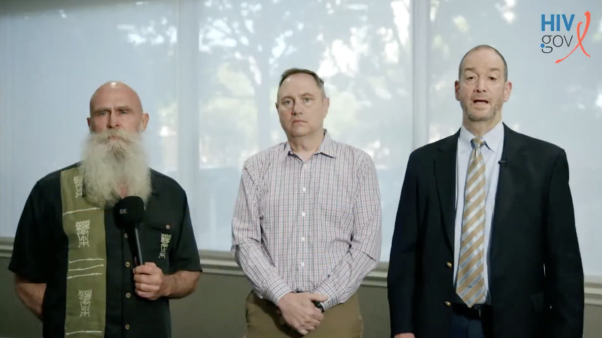Each year, the Conference on Retroviruses and Opportunistic Infections (CROI) features an array of exciting new developments in HIV research that can help support the health and well-being of people across the globe. Before the start of the 80th full council meeting of the Presidential Advisory Council on HIV/AIDS (PACHA) in Houston, TX, HIV.gov had the opportunity to speak with PACHA members Patrick Sullivan, DrPH, MPH, Professor of Epidemiology at Emory University’s Rollins School of Public Health, and Jeff Taylor, Executive Director of the HIV and Aging Research Project, who both attended CROI 2024, about what they presented and what stood out to them at this year’s conference. Watch their conversation on YouTube or the video at the top of this blog post.
Mentorship and HIV and Aging Research
Mr. Taylor noted that this year was the first time a formal mentorship program for advocates was launched at the conference, with seasoned mentors paired with new Community Educator Scholars to support and engage them to ensure they got the most out of CROI. He also reflected on the range of research presented at CROI related to HIV and aging. He noted that there continue to be findings presented via abstracts and presentations from the NIH-supported REPRIEVE trial, a global study that demonstrated that a statin, a cholesterol-lowering medication, may offset the high risk of cardiovascular disease in people with HIV by more than a third, potentially preventing one in five major cardiovascular events (e.g., heart attacks, strokes, or surgery to open a blocked artery) or premature deaths in this population. As he noted, new clinical guidelines were recently published based on those findings, helping clinicians better support the health of those ages 40–75. (View HIV.gov’s CROI 2024 conversation with Dr. Carl Dieffenbach about new REPRIEVE trial findings.)
The Further Promise of PrEP
Dr. Sullivan discussed new evidence from a study he and his colleagues at Emory University conducted showing that, over the past decade, U.S. states with high PrEP coverage among those who need it experienced steeper declines in new HIV diagnoses rates than states with low PrEP coverage. Their analysis showed that from 2012 to 2021, states with the lowest levels of PrEP coverage saw an annual increase in new HIV diagnoses, while all other states saw an annual decrease in HIV diagnoses, with the largest decreases among states with the highest levels of PrEP coverage. In other words, he emphasized, while we’ve known for decades that PrEP works to prevent HIV at the individual level, we now know that when we remove barriers to PrEP access and take PrEP to scale, we can see an impact on the population level as well. He further noted that other studies presented at CROI 2024 about all stages in the PrEP cascade—awareness, access, uptake, and adherence—show that we have the tools to get us to that high level of PrEP coverage and better knowledge of how to deploy them.
Catch Up on Other CROI HIV Research Updates
Mr. Taylor also shared an important observation about the opening session with the HIV.gov team as we were working on this blog. He noted, “There was ongoing discussion at CROI regarding stigma as an obstacle to ending the epidemic. Ugandan activist Frank Mugisha, Sexual Minorities Uganda (SMUG), highlighted the chilling impact of new laws criminalizing LGBTQ individuals during the conference’s opening plenary. He added that these laws hinder access to HIV care and threaten progress against HIV and that discriminatory policies can cripple the fight against HIV.”
HIV.gov has shared other interviews from CROI 2024 with federal HIV leaders, participating researchers, and community members. You can find all of them on HIV.gov’s social media channels and with recaps here on the blog available by using the CROI topic tag.
About CROI
More than 3,600 HIV and infectious disease researchers from 73 countries gathered in Denver and virtually from March 3-6 this year for CROI, an annual scientific meeting on the latest research that can help accelerate global progress in the response to HIV and other infectious diseases, including STIs and viral hepatitis. Over 1,000 summaries of original research were presented. Visit the conference website for more information. Session webcasts and more information will be published there for public access in 30 days.
This blog post was published April 2, 2024, on HIV.gov.








Comments
Comments